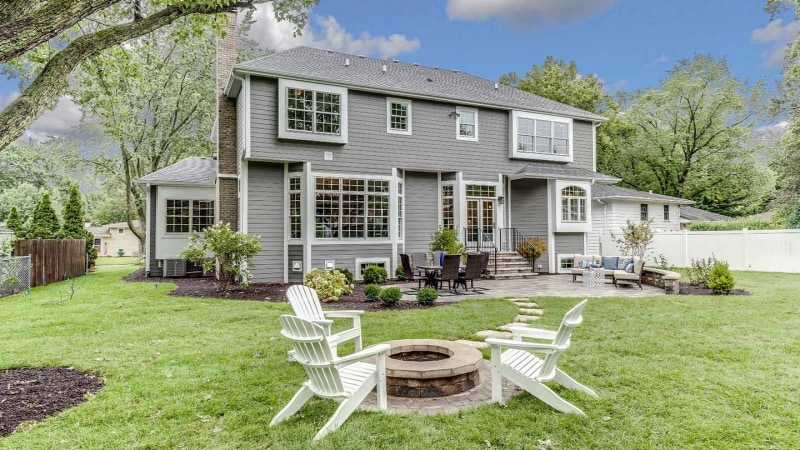Sustainable and zero-impact landscaping tips

Quick insights
- Sustainable landscaping means using eco-friendly practices to conserve resources, support wildlife and reduce waste.
- Zero-impact landscaping aims to eliminate negative environmental effects altogether by reusing and replenishing resources.
- Practical strategies include using native plants, minimizing landscape waste, conserving water and maintaining healthy soil.
Sustainable and zero-impact landscaping both focus on creating beautiful outdoor spaces while minimizing environmental harm. Either approach involves using eco-friendly practices, like choosing native plants and conserving water. Homeowners can design landscapes that not only look great, but also support local ecosystems and reduce their carbon footprint.
What is sustainable and zero-impact landscaping?
Sustainable landscaping is a method of designing, creating and maintaining outdoor spaces in a way that aligns with the local climate, ecosystems and natural resources. Sometimes associated with green landscaping, the goal is reducing environmental impact. Zero-impact landscaping takes sustainability a step further by striving for no negative environmental effects. This approach emphasizes closed-loop systems where all resources are reused or replenished.
Regardless of your goal, applying key principles of sustainable or zero-impact landscaping has several benefits:
- Water efficiency: Uses drought-resistant plants and efficient irrigation.
- Soil health: Improves soil with composting and mulching.
- Native plants: Reduces maintenance and supports wildlife.
- Wildlife habitat: Creates ecosystems for pollinators and birds.
- Waste reduction: Uses sustainable materials and minimizes chemicals.
Sustainable landscaping techniques
Here are several approaches to landscaping your property for sustainability.
Choose native plants
Arguably the most sustainable landscaping technique, incorporating native plants into landscaping can enhance sustainability. Here are some benefits of landscaping with plants native to your area:
- Low maintenance: Adapted to local soil and climate, requiring less water and care.
- Water efficient: Thrive on natural rainfall, reducing the need for irrigation.
- Supports wildlife: Provides food and shelter for pollinators, birds and insects.
- Pest resistant: Naturally adapted to local pests, reducing the need for pesticides.
Conserve water
Implementing water-saving strategies can help reduce consumption and promote a sustainable landscape.
- Drought-tolerant plants: Require less water and adapt well to dry conditions, minimizing irrigation needs.
- Rainwater harvesting: Captures and stores rainwater for landscape use, reducing dependence on municipal water.
- Hydro-zoning: Groups plants with similar water needs together for more efficient watering.
- • Water-efficient irrigation: Uses drip irrigation and smart controllers to deliver water directly to plant roots, preventing waste.
Practice soil conservation
Maintaining healthy soil can improve water retention, prevent erosion and support plant growth.
- Mulching: Retains moisture, regulates soil temperature and reduces erosion.
- Composting: Enhances soil nutrients and promotes plant health naturally.
- Cover crops: Prevents soil erosion and improves soil structure by adding organic matter.
- Minimal tilling: Reduces soil disturbance, preserving its structure and moisture content.
Install permeable hardscapes
Incorporating permeable materials can help manage stormwater and reduce runoff.
- Reduces water runoff: Allows rainwater to soak into the ground, preventing flooding and erosion.
- Improves groundwater recharge: Helps replenish underground water sources.
- Enhances drainage: Minimizes pooling and standing water issues.
- Eco-friendly materials: Uses gravel, permeable pavers or porous concrete for sustainability.
Minimize landscape waste
Reducing waste in landscaping helps conserve resources and reduces landfill impact.
- Grass-cycling: Leave grass clippings on the lawn to decompose naturally and nourish the soil.
- Mulching: Use organic materials like leaves or wood chips to retain moisture and suppress weeds.
- Repurpose yard waste: Turn tree trimmings and other debris into natural garden structures or garden beds.
- Recycling materials: Reuse bricks, stones and wood for new landscaping projects or pathways.
In summary
Sustainable and zero-impact landscaping can both conserve resources, support biodiversity and reduce environmental harm. Whatever your goal, sustainable landscaping can include using native plants, conserving water, minimizing waste and incorporating permeable hardscapes. This way, your outdoor spaces look nice while being eco-friendly. By balancing aesthetics with functionality, sustainable landscaping could potentially enhance property value while benefiting the environment.



